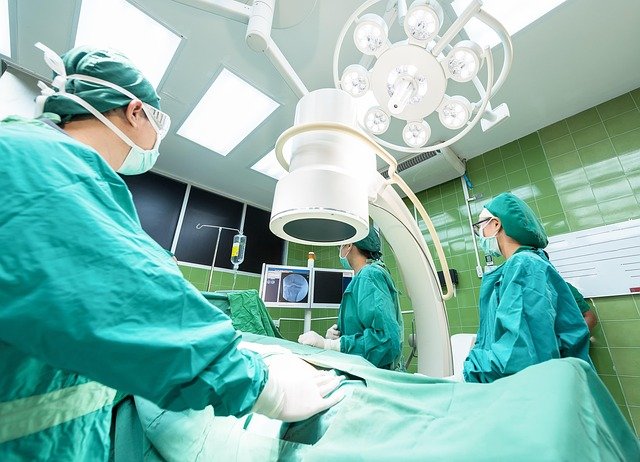Fat Transfer Procedures Available Across Canada for Body Contouring
Fat transfer, a medical procedure designed to address localized fat deposits, is gaining attention in Canada. This technique can aid in reshaping areas of the body by redistributing fat from one region to another. The results and specific considerations vary depending on individual cases, making a consultation essential for those interested in this approach to body contouring.

Understanding the Fat Transfer Procedure and Its Applications
Fat transfer, also known as fat grafting or lipofilling, is a two-step surgical process that begins with liposuction to remove fat from donor areas such as the abdomen, thighs, or flanks. The harvested fat undergoes purification to separate healthy fat cells from other fluids and damaged tissue. Surgeons then carefully inject the processed fat into target areas requiring enhancement or volume restoration.
Common applications for fat transfer include breast augmentation, buttock enhancement, facial rejuvenation, and hand restoration. The procedure can address volume loss due to aging, weight fluctuations, or genetic factors. Many patients appreciate that fat transfer uses their own tissue, eliminating concerns about foreign materials or implants. The dual benefit of removing unwanted fat while enhancing desired areas makes this procedure particularly appealing for comprehensive body contouring goals.
Recovery typically involves minimal downtime compared to traditional implant procedures, though patients should expect some swelling and bruising at both donor and recipient sites. The harvested fat must establish a blood supply in its new location, which occurs over several weeks following the procedure.
Exploring the Benefits of Fat Transfer for Body Contouring
Fat transfer offers numerous advantages for patients seeking body contouring solutions. The procedure provides natural-looking results since the transferred tissue is the patient’s own fat, creating seamless integration with existing body contours. Unlike synthetic implants, fat transfer eliminates the risk of rejection or adverse reactions to foreign materials.
The versatility of fat transfer allows surgeons to address multiple body areas simultaneously, creating harmonious proportions and balanced aesthetics. Patients can achieve subtle or dramatic changes depending on their goals and available donor fat. The procedure also offers long-lasting results, as successfully transferred fat cells typically remain permanent once they establish proper blood circulation.
Additional benefits include improved skin texture and quality in treated areas, as fat transfer can enhance skin thickness and elasticity. The minimally invasive nature of the procedure means smaller incisions, reduced scarring, and faster healing times compared to traditional surgical alternatives. Many patients also report high satisfaction levels due to the natural feel and appearance of transferred fat tissue.
Canadian regulations ensure that fat transfer procedures are performed by qualified medical professionals, providing patients with safety assurance and quality standards. The availability of these services across major Canadian cities makes the procedure accessible to patients nationwide.
Factors Influencing Results and Considerations for Patients
Several factors significantly impact fat transfer outcomes and patient satisfaction. The survival rate of transferred fat cells varies among individuals, typically ranging from 50% to 80% of injected volume. Factors such as smoking, age, overall health, and post-operative care can influence how well transferred fat integrates into new locations.
Patient expectations play a crucial role in satisfaction levels. While fat transfer can create noticeable improvements, results may be more subtle than those achieved with implants or other augmentation methods. Some patients may require multiple sessions to achieve desired outcomes, particularly for significant volume enhancement.
The skill and experience of the performing surgeon greatly influence results. Proper fat harvesting, processing, and injection techniques are essential for optimal fat cell survival and natural-looking outcomes. Patients should research qualified practitioners and review before-and-after photos to set realistic expectations.
Pre-operative factors such as maintaining stable weight and good overall health contribute to better outcomes. Post-operative compliance with activity restrictions and follow-up appointments helps ensure proper healing and fat integration. Patients should avoid pressure on treated areas and follow specific post-care instructions provided by their surgeon.
| Procedure Type | Average Cost Range (CAD) | Duration | Recovery Time |
|---|---|---|---|
| Facial Fat Transfer | $3,000 - $6,000 | 1-2 hours | 1-2 weeks |
| Breast Fat Transfer | $8,000 - $15,000 | 2-4 hours | 2-4 weeks |
| Buttock Fat Transfer | $10,000 - $18,000 | 3-5 hours | 3-6 weeks |
| Hand Fat Transfer | $2,500 - $4,500 | 1-2 hours | 1 week |
Prices, rates, or cost estimates mentioned in this article are based on the latest available information but may change over time. Independent research is advised before making financial decisions.
Cost considerations vary significantly based on the extent of treatment, geographic location, and surgeon expertise. Major Canadian cities typically have higher pricing due to increased overhead costs and demand. Patients should factor in potential additional procedures if initial results require enhancement, as well as travel costs if seeking treatment outside their local area.
The consultation process is essential for determining candidacy and developing realistic treatment plans. Surgeons evaluate factors such as available donor fat, skin elasticity, and patient goals to recommend appropriate approaches. Some patients may benefit from combining fat transfer with other procedures for comprehensive results.
Fat transfer procedures represent a valuable option for Canadians seeking natural body contouring solutions. The combination of removing unwanted fat while enhancing desired areas, along with the use of the patient’s own tissue, continues to drive popularity for this versatile procedure. Success depends on careful patient selection, skilled surgical technique, and realistic expectations about outcomes and recovery.
This article is for informational purposes only and should not be considered medical advice. Please consult a qualified healthcare professional for personalized guidance and treatment.




